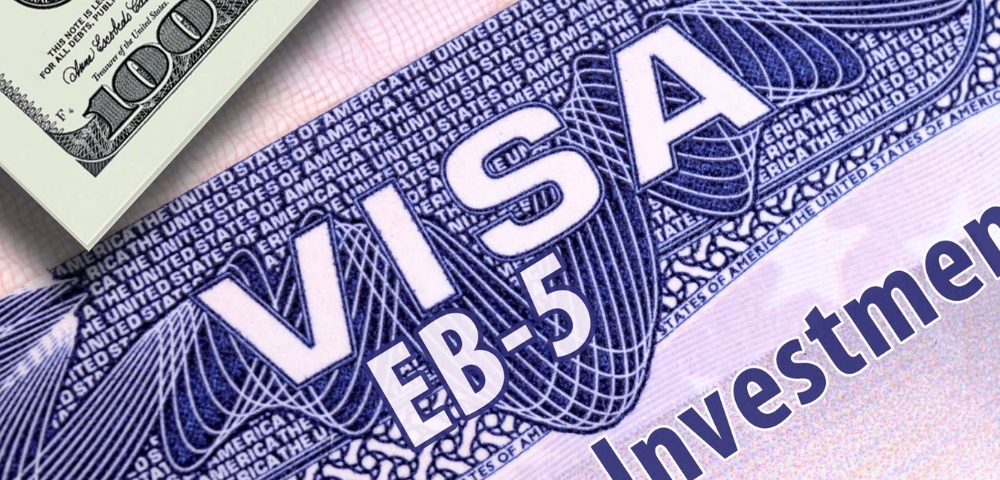
The EB-5 Visa, also known as the Immigrant Investor Program, is a unique pathway for foreign investors to gain permanent residency in the United States. This program offers a mutually beneficial arrangement: it stimulates the U.S. economy through capital investment and job creation, while providing eligible investors and their immediate family members an opportunity to become lawful permanent residents – commonly known as getting a Green Card.
The EB-5 Visa, central to the U.S. Immigrant Investor Program, offers a coveted route to achieving the American Dream. It's designed for affluent foreign investors seeking Permanent Residency in the United States. Through this program, investors can secure a Conditional Green Card, eventually leading to Permanent Residency, by channeling substantial investments into the U.S. economy and creating jobs. Navigating the Application Process for the EB-5 Visa involves intricate steps but promises significant rewards, making it an attractive option for those wishing to invest in their future while contributing to the economic growth of the United States.
The EB-5 Visa program requires foreign investors including those seeking a work visa USA,to contribute a significant amount of capital to new or existing U.S. business enterprises. This investment must lead to the creation or preservation of at least 10 full-time jobs for qualifying U.S. workers within a specified period. The primary goal of the EB-5 Visa is to foster economic growth, especially in targeted employment areas (TEAs), which are either rural or have high unemployment rates.
The EB-5 Visa, part of the U.S. Immigrant Investor Program, offers a route to Permanent Residency for foreign investors. By investing a minimum of $1.8 million, or $900,000 in targeted employment areas, and creating at least 10 jobs, investors can apply for a Conditional Green Card. This Application Process involves strict criteria, including active business involvement and financial risk. After two years, investors can seek Permanent Residency by proving their investment’s impact. The EB-5 Visa, while complex, presents a valuable opportunity for investors to gain residency and contribute to the U.S. economy.
To qualify for the EB-5 Visa, an investor must meet several criteria:
The application process for an EB-5 Visa involves several steps:
Investors can either invest directly in a business or through a Regional Center, which pools investments for larger projects.
This is the initial petition to demonstrate eligibility for the EB-5 Visa.
Once the I-526 is approved, the investor and their immediate family can apply for a Conditional Green Card, which allows them to live, work, and study in the U.S.
This petition, submitted two years after receiving the Conditional Green Card, is to remove the conditions and obtain permanent residency. It must demonstrate that the investment has met all requirements, including job creation.
Upon approval of the I-829 petition, the investor and their family members receive Permanent Residency in the U.S.
The EB-5 Visa, an integral part of the U.S. Immigrant Investor Program, offers significant benefits for foreign investors seeking Permanent Residency in the United States. This program is not just a pathway to obtaining a Green Card; it's a gateway to numerous opportunities and advantages.
Firstly, the EB-5 Visa provides a direct route to Permanent Residency for the investor, their spouse, and unmarried children under 21. This eliminates the need for employer or family sponsorship, which is a requisite in many other visa categories. As Permanent Residents, beneficiaries of the EB-5 program can live, work, and study anywhere in the U.S., availing themselves of the same educational and employment opportunities as U.S. citizens.
Additionally, the EB-5 Visa comes with the flexibility of investment. Investors can choose to directly manage their own business or invest in a Regional Center project. This flexibility allows for a range of investment opportunities suited to different investor profiles and preferences.
The Application Process, although rigorous, is straightforward, allowing investors to obtain a Conditional Green Card relatively quickly compared to other immigration routes. After fulfilling the program requirements, including job creation and capital investment, investors can transition from a Conditional Green Card to a Permanent Residency, solidifying their status in the U.S. and opening the door to eventual citizenship if desired.
The EB-5 Visa offers several advantages:
While the EB-5 Visa program is attractive, it's not without challenges:
The investment must be at risk, meaning there’s a possibility of losing the capital.
Navigating the legal aspects of the EB-5 program can be complex, requiring expertise in immigration and investment laws.
The process can be time-consuming, with varying processing times for applications.
The investor must prove that their investment has met all requirements to transition from a Conditional Green Card to a Permanent Residency.
The EB-5 Visa, a key component of the U.S. Immigrant Investor Program, offers a unique opportunity for foreign investors to gain Permanent Residency in the United States. While the pathway through this program requires substantial investment and adherence to specific job creation and management criteria, its benefits, including a direct route to a Green Card, make it a highly sought-after option for investors aiming to live and work in the U.S. As with any immigration process, it’s essential to understand all aspects of the program, from the initial Application Process to the final step of obtaining Permanent Residency, to ensure a successful application